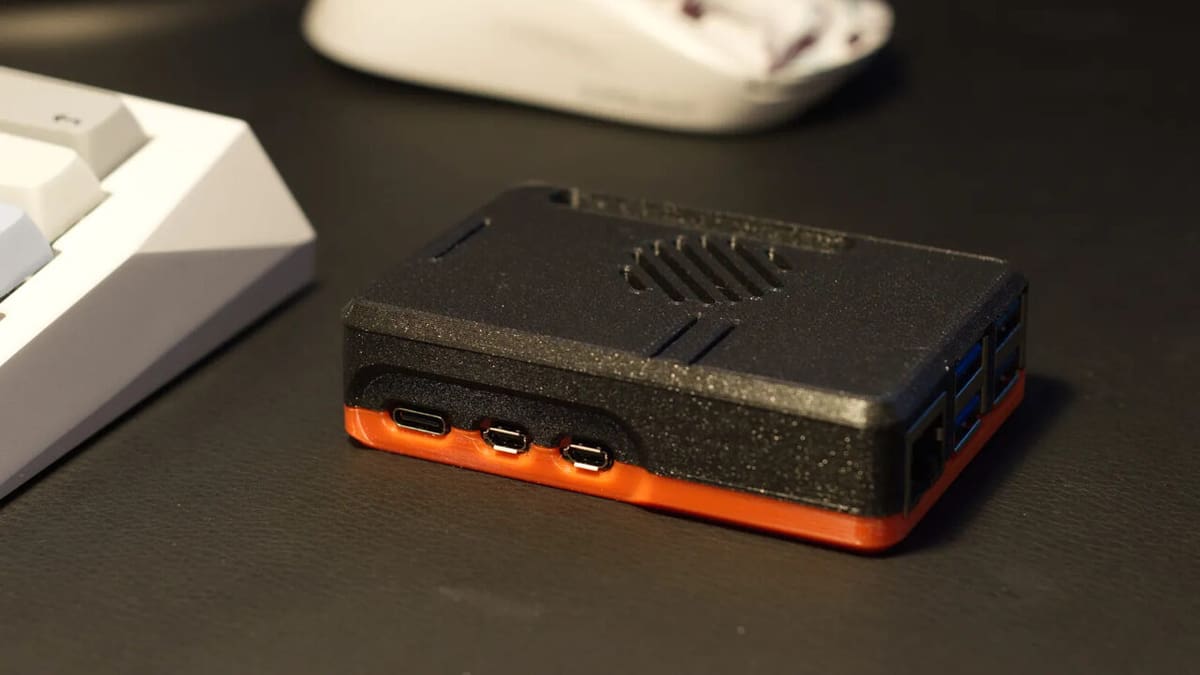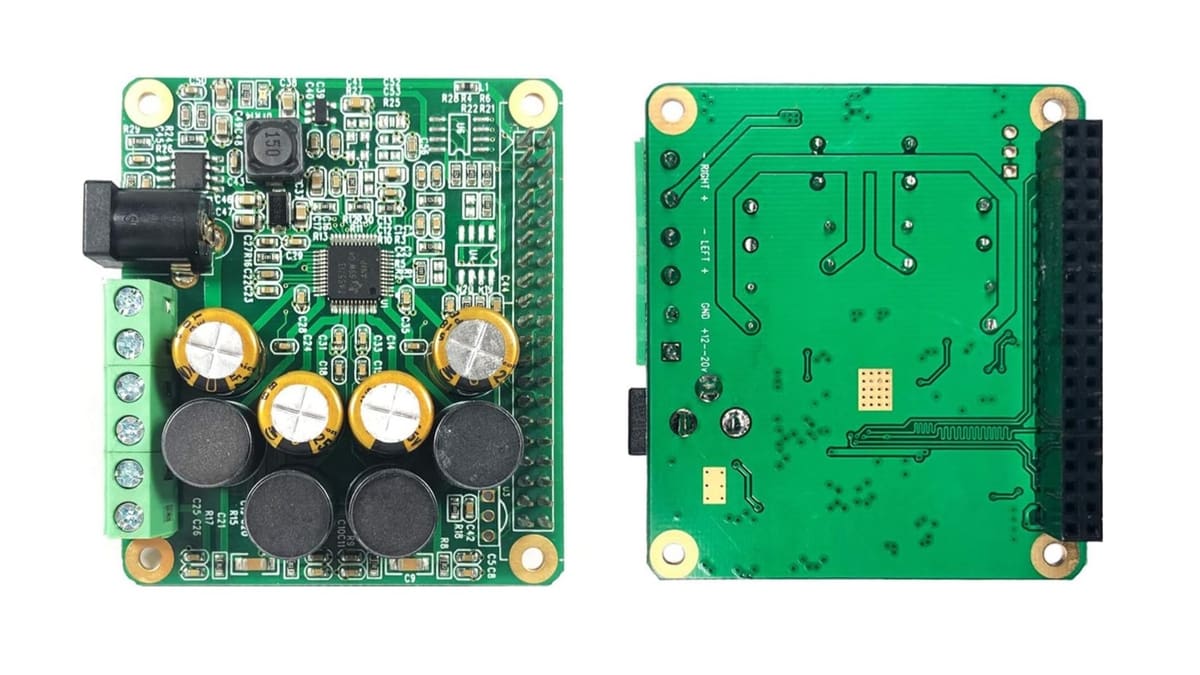The much anticipated Raspberry Pi 5 was released in October 2023, and to say that it is a big upgrade from the Raspberry Pi 4 would be an understatement.
The Broadcom BCM2712 is a first-of-its-kind processor, which was designed in-house and produced exclusively for the Raspberry Pi 5. It runs at 2.4 GHz, an over 60% increase in clock speed over the Pi 4.
The expandability options have also been much improved with the dedicated camera and display MIPI interfaces doubling from two to four lanes and increasing from 1 Gbps to 1.5 Gbps, yielding a 3x increase in total throughput and the ability to use both connectors for either a display or a camera. And one improvement that has got a lot of people excited is the PCIe interface, which will allow the addition of high-bandwidth devices, such as dedicated graphics or SSD storage.
This all allows for so many new possibilities and paves the way for a whole slew of accessories to make use of the exciting new tech. Check out our top picks of accessories for your Raspberry Pi 5, some to buy, some to DIY.
Basics
Before you rush out and buy the more exciting accessories for your shiny new Pi, it’s important to start with the basic necessities that will get it up and running. Here are some of the things you’ll need for an overall improved experience.
Coolers
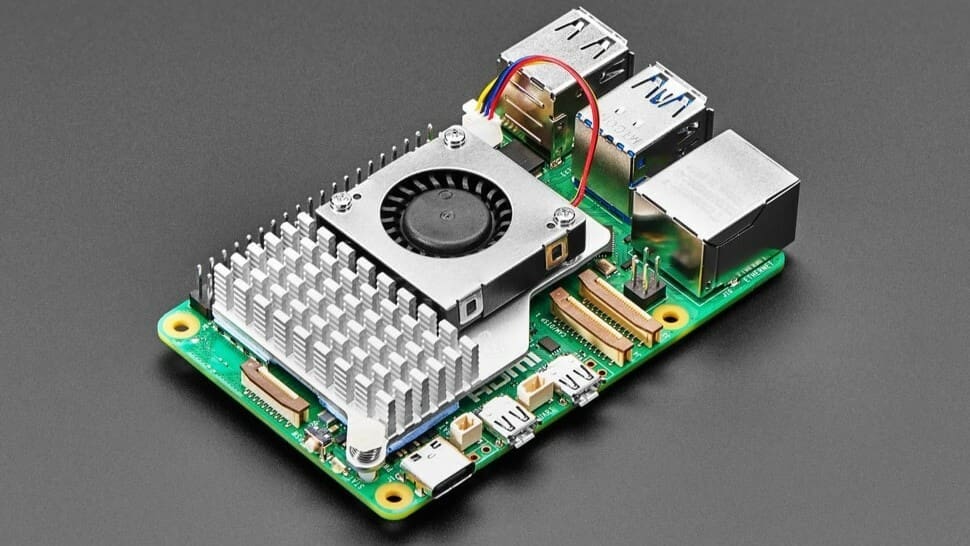
With the Raspberry Pi 4, while it was recommended to add some form of heatsink or fan to cool the main processor, it wasn’t absolutely necessary. The same can’t be said for the Raspberry Pi 5, because while the BCM2712 is a very efficient chip, if you plan on putting it under any significant workload, it will need to be cooled in order to keep it from thermal throttling (the thermal throttle limit is 85 °C). There are quite a few cooling solutions available, so let’s take a look at a couple of them.
Official Raspberry Pi 5 Active Cooler
This cooler will probably be the first choice for many because of its compact, simple design and low cost (~$5). It features a 30-mm low-profile centrifugal fan that connects to the dedicated 4-pin PWM-controlled 5-V fan header on the Pi 5. This allows the fan to be software-controlled to keep the processor cool while remaining quiet when not under heavy load.
The anodized aluminum heatsink covers the main processor as well as the memory module, main power management IC, and the Wi-Fi and Bluetooth module as well. It comes with pre-applied thermal pads for heat transfer and spring-loaded plastic pins that fit into the dedicated cooler mounting holes. One note about installation is that it’s not recommended to remove the cooler once installed, as the plastic pins can become looser after reinstalling, making the cooler not function as well as it’s designed to.
GeeekPi Passive Heatsink Case
Due to the amount of heat thrown off by the Raspberry Pi 5, passive cooling using individual small heatsinks would not be very effective. The simple solution for this is just to go big! This heatsink case from GeeekPi features a beefy heatsink that forms the body of the case as well as smaller contact patches below that stick on to the individual chips with the included thermal pads.
The heatsink case provides cutouts for almost all of the I/O, including the 40-pin GPIO header and a centrally located slot for the camera or display ribbon cables. There are also extender pins for the GPIO header to ensure compatibility with HATs that may otherwise be blocked by the surrounding heatsink. And for ~$15, it’s a pretty great option.
Cases
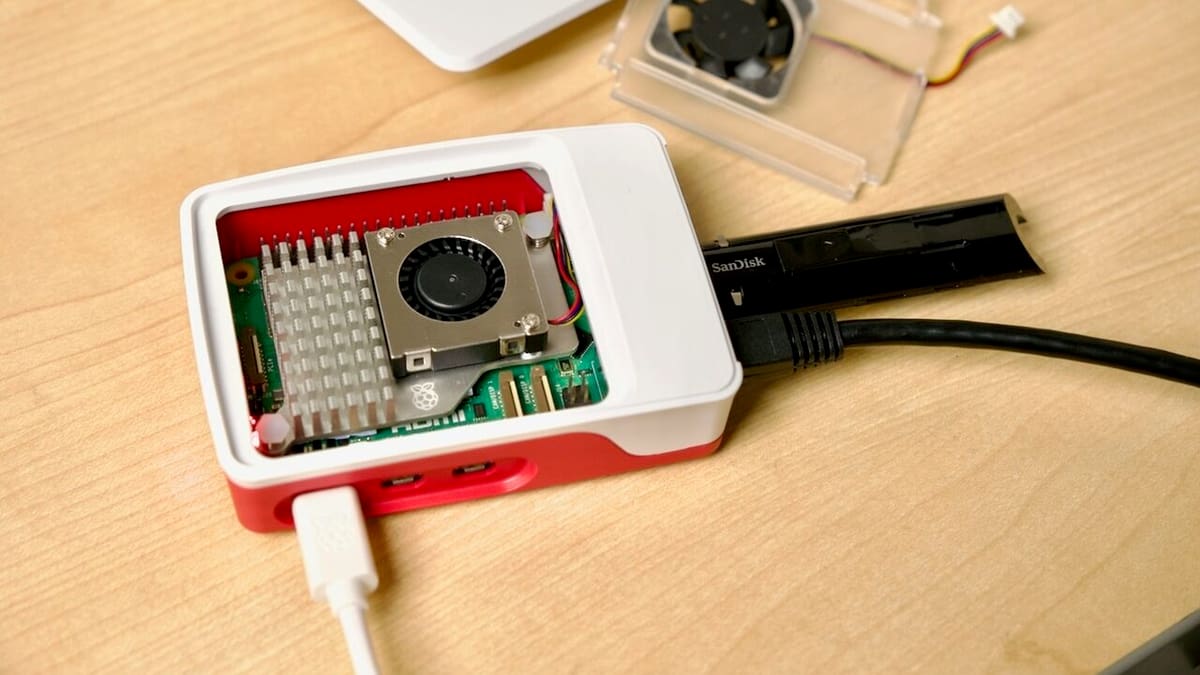
While the Raspberry Pi 5 is very affordable for what it is, it’s certainly not cheap. Therefore, it’s important to protect your investment with a case to prevent damage to the bare PCB and components. Since the design has changed so much in this latest revision of the Pi, you won’t be able to reuse any case that was designed for earlier models. Luckily, there are already a plethora of cases to choose from which offer various features and levels of protection.
Official Raspberry Pi 5 Case
The official case has very similar styling to the previous models, with a raspberry-red and white color theme and a curved, sleek design. The case comes with a PWM-controlled axial fan and a single heatsink that covers the CPU, however you can use the active cooler along with the official case.
The included fan is rated for almost three times the airflow as the one included with the official active cooler, presumably to keep airflow adequate after mostly enclosing the Pi. The design is semi-modular, allowing for the stacking of multiple units, and features a removable transparent center section in which the fan is mounted.
For ~$10, it’s a sleek, fun, and most important of all, reliable addition.
3D Printed Options
Since the Raspberry Pi 5 was released, folks have been busy designing 3D printed case solutions, and there are already quite a few to choose from. While many of these designs may not have the fit and finish of the commercially available options, 3D printed cases can offer custom features and interesting concept designs that wouldn’t exist otherwise. That said though, many users will be looking for a basic, utilitarian 3D printable design, so here are a couple that we recommend.
The Raspberry Pi 5 Case (snap fit) by pyhro is a well-executed take on the classic snap-fit design we have seen for all the previous models of Pi, updated for the Raspberry Pi 5. It features a simple two-piece construction and vent holes for airflow and to accommodate the active cooler. The designer includes multiple design files for both the top and bottom pieces with differing vent hole patterns, and even includes cool thermal camera images showing how each one performs!
The Raspberry Pi 5 Case by Willbolton is another minimalist, two-piece design with a focus on airflow. This case features a perforated, removable top panel and slots for captive M3 nuts on the bottom plate to allow stacking or the use of standoffs for mounting. The designer modeled the top as a solid piece and instructs users to print it with no top or bottom layers and a permeable infill (they used cubic) in order to make the panel perforated.
Nice to Have
There are a few new features on the Raspberry Pi 5 that require some external hardware to make use of. Here are a couple of things in that category that you may want to add to your Raspberry Pi 5 wishlist.
RTC Battery
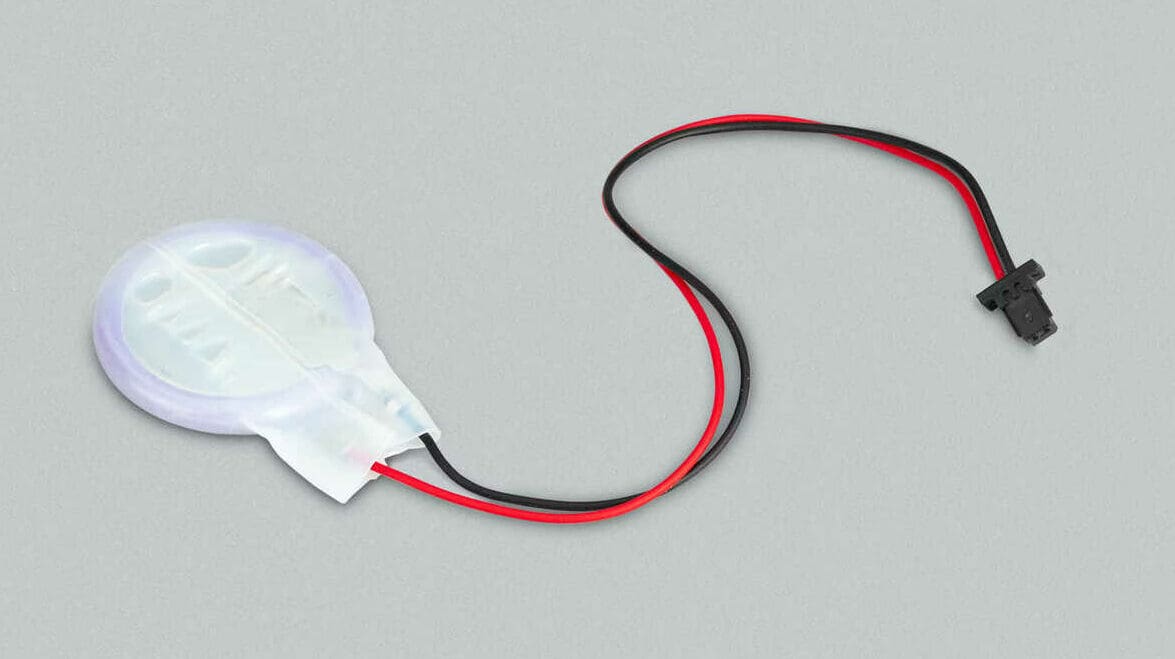
The real time clock (abbreviated RTC) is a new addition to the Raspberry Pi 5, which has been a long time coming. Much like most modern PC motherboards, the Raspberry Pi 5 features the ability to keep a constant clock running in order to remember the date and time even when the machine is powered off.
To achieve this, there needs to be some form of battery backup, and the RTC Battery is simply an enclosed CR2032 lithium battery that plugs into a dedicated port on the Raspberry Pi 5. There are a couple of versions of the RTC battery, but the official Raspberry Pi RTC battery is the simplest of them. It’s essentially just a battery with heat shrink around it. This version, at ~$5, might be just what you need for plenty of projects.
Pineberry Pi HatDrive
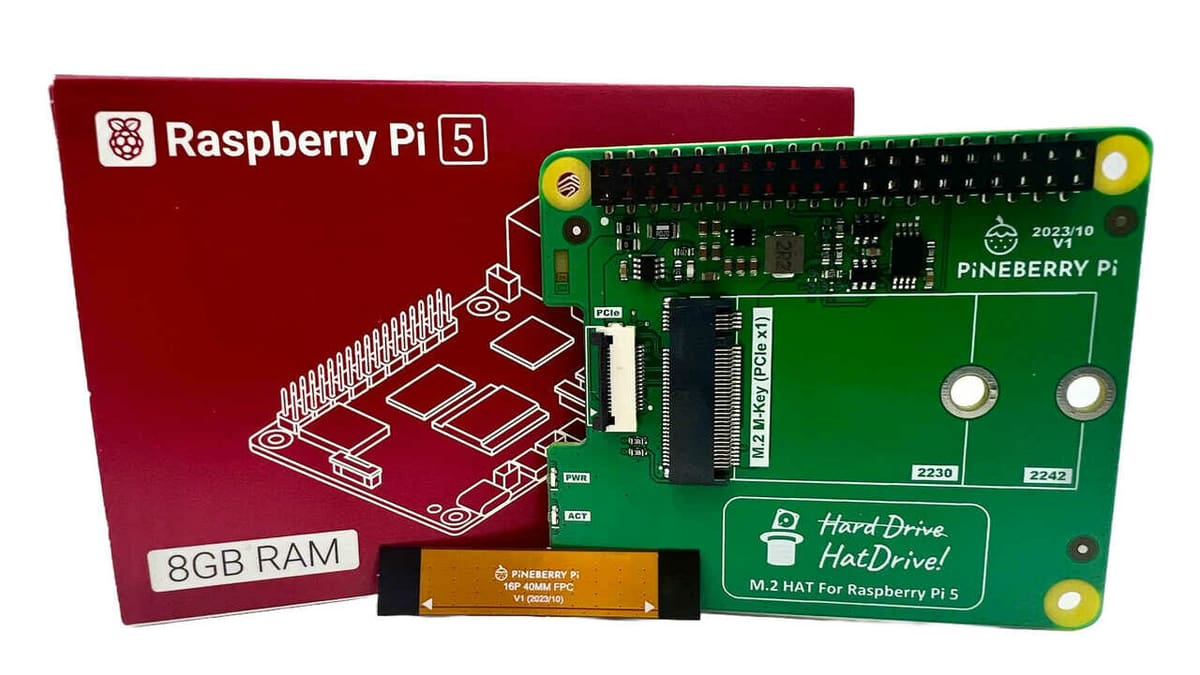
The PCIe connector is possibly the most game-changing feature on the Raspberry Pi 5, and the folks at Pineberry Pi were the first to make use of this feature for connecting an external M.2 SSD. While SD cards work just fine for storage, they are much slower and not as reliable as an SSD.
The Pineberry Pi HatDrive, ~$22, is compatible with the shorter 2230 and 2242 M.2 SSDs and is sized to fit perfectly in the opening at the top of the official Raspberry Pi 5 case. Another thoughtful feature is the small cutout on the PCB to accommodate the ribbon cable that attaches to the Pi. There’s also a bottom-attached version that supports the larger, standard-size 2280 SSDs as well!
DACs & Audio Amplifiers
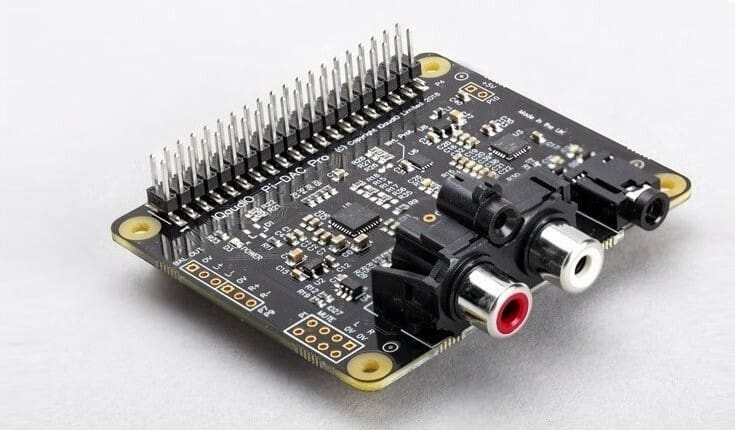
One feature that has been removed from the Raspberry Pi 5 is the 3.5-mm audio jack. This is a topic of some contention, as the 3.5-mm jack has slowly been disappearing from gadgets for a while now, much to the annoyance of audio enthusiasts. All is not lost, however, as there are several easy ways to add back this functionality to the Raspberry Pi 5.
Raspberry Pi DAC Pro
This little board is a plug-and-play solution that allows you to get analog audio output from your Raspberry Pi 5. It features a high-performance DAC from Texas Instruments and simply plugs into the GPIO header on the Raspberry PI 5. The DAC Pro provides several options for connections with not only a 3.5-mm jack, but also stereo RCA connections as well as a female pin header with the left and right audio broken out directly. Priced at ~$25, it opens the door to many more projects for an accessible value.
RPi HiFi Amp HAT
If your goal is to drive passive speakers directly with your Raspberry Pi 5, there is a solution for that, too! With these inexpensive class D amplifiers, you can add a surprising amount of audio oomph to your Pi.
The amplifier has to be powered separately though, and this is achieved through a 12-V DC barrel jack. The speakers are hooked up through simple bare-wire screw terminal connectors, and the HAT breaks out the 40-pin GPIO on top so you don’t lose access to all of your I/O. For ~$25, this small add-on significantly bumps the Pi’s functionality.
Keep an Eye Out for...
The Raspberry Pi 5 is pretty new, and as such, even if there are some accessories that are compatible with different models, a bit of patience may be needed for more specific ones. Here’s one option you can check out now!
Waveshare PoE HAT For Raspberry Pi 5
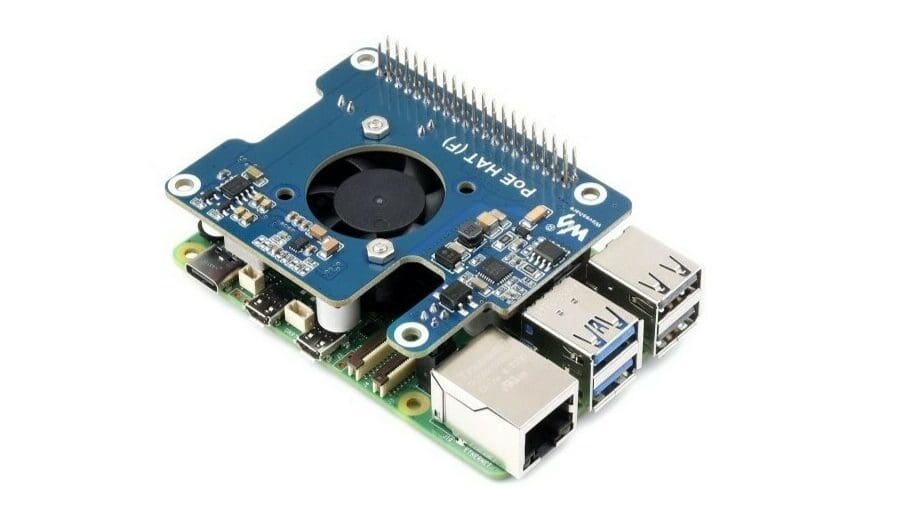
The Raspberry Pi 5 features a 4-pin header on top for Power over Ethernet, just like the Pi 3 and 4 before it. While Raspberry Pi is developing its Official Raspberry Pi 5 PoE adapter, it’s not yet available at time of writing.
That said, Waveshare has taken up the slack and released their PoE HAT at ~$30. This attaches to the 40-pin GPIO and has an onboard power regulator that can take power from an upstream PoE-enabled device and use it to power the Pi. It also comes with an active cooler with a heatsink and fan for cooling the Pi, and is compatible with the Official Raspberry Pi 5 case and will fit inside without any modification.
License: The text of "The Best Raspberry Pi 5 Accessories" by All3DP is licensed under a Creative Commons Attribution 4.0 International License.


